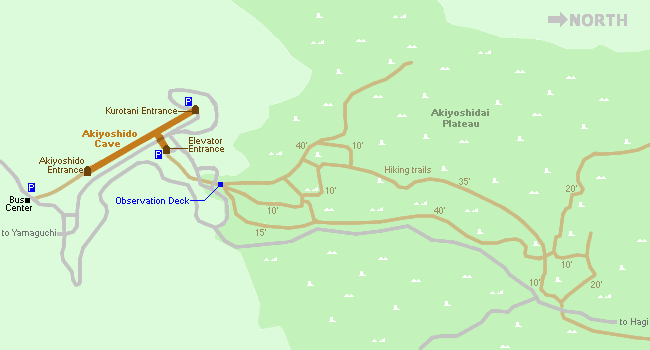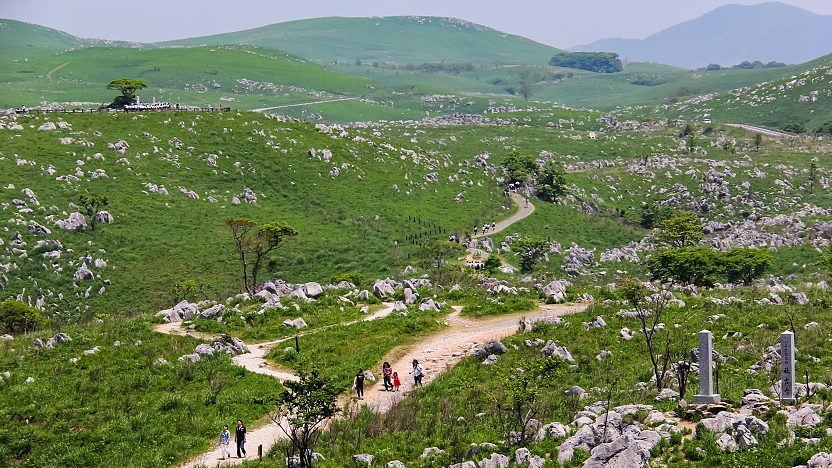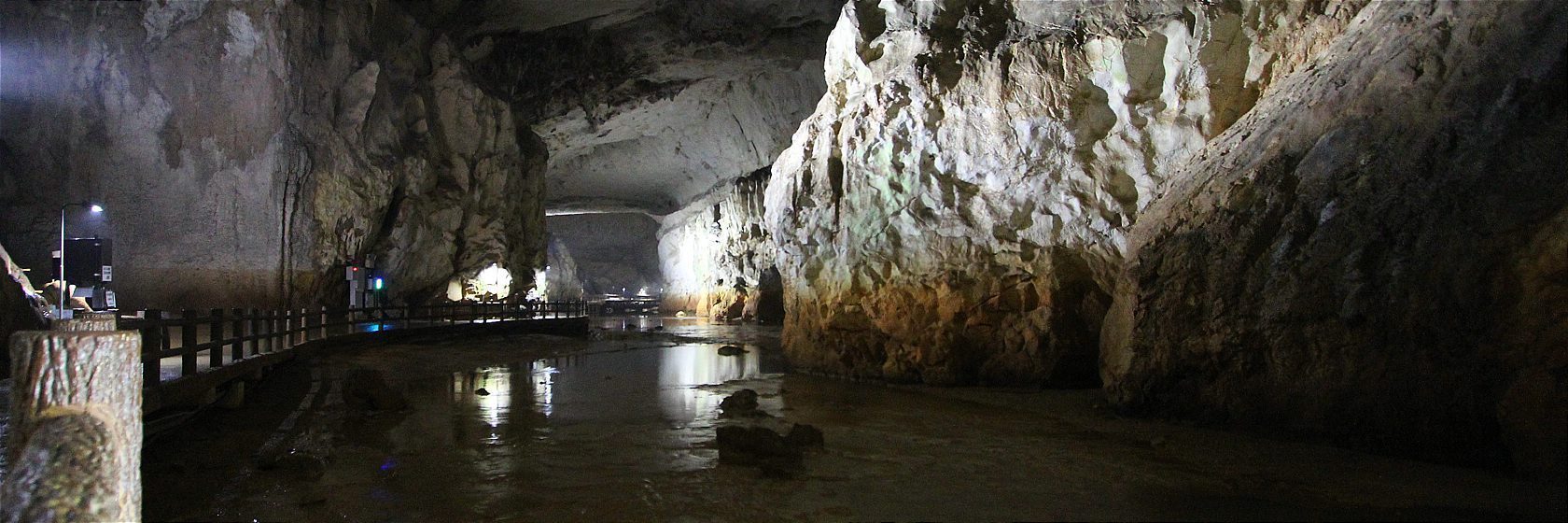Mine City in Yamaguchi Prefecture is home to Akiyoshidai (秋吉台), the plateau with the highest concentration of karst formations in Japan, and Akiyoshido (秋芳洞, Akiyoshidō), the nation's largest and longest limestone cave. The area which encompasses the plateau and the cave is a designated quasi national park.

The vast lands of the Akiyoshidai Plateau are dotted with limestone pinnacles, presenting a landscape rarely seen in Japan. The plateau was a coral reef an estimated 300 million years ago, and the karst topography that we see today is the result of the gradual dissolution of limestone by rain through the years.
Akiyoshidai's scenery can be enjoyed along the main road which winds through the highland (if you have a car) or from a network of hiking trails that covers the plateau. Akiyoshidai is also known for its different seasonal appearances: fresh green in spring and summer, reddish yellow in autumn and white from fallen snow in winter.

Below the surface at the south end of Akiyoshidai lies the Akiyoshido Cave. The massive limestone cave has a total length of about nine kilometers, of which one kilometer is open to the public. The cave is spacious and easy to navigate, with ample lighting, paved paths and leveled steps. Various natural formations can be seen along the course, such as terraces of limestone pools filled with water, underground waterfalls and a lovely stream of cobalt blue water flowing along the path. There is also an adventure path for an additional 300 yen that is slippery and slightly difficult to navigate, but rewards challengers with a nice view of the cave from a higher perspective.
The cave can be entered from three entrances: the Akiyoshido Entrance, the Kurotani Entrance or via an elevator. The Akiyoshido Entrance is the closest to the bus terminal and main parking lots, while the Kurotani Entrance is often used by tour groups. From the elevator entrance of the cave, it is a 5-10 minute walk to an observation deck with nice views over the Akiyoshidai Plateau. The observation deck is also the starting point of several nature trails which lead into the plateau and closer to the karst formations.
A good way to fully enjoy the cave is to enter from the Akiyoshido Entrance, walk through the cave, turn back at the Kurotani Entrance, exit using the elevator and then visit the observation deck. From there, re-enter the cave via the elevator (using the same ticket) and return to the Akiyoshido Entrance. Alternatively, visitors can use buses that run between the cave's three entrances. While the buses run relatively frequently on weekends and holidays, they are very infrequent on weekdays and do not run at all on winter weekdays.

Getting there and around
Akiyoshidai is often combined with a visit to Yamaguchi in the southeast and/or Hagi in the north. No train lines run close to the area, and most people will arrive by bus or car.

From Yamaguchi
JR Bus operates buses between Yamaguchi Station and Akiyoshido (60 minutes, 1230 yen, one bus every 2-4 hours), while Bocho Bus operates buses between Shin-Yamaguchi Station and Akiyoshido (45 minutes, 1170 yen, one bus/hour). The Japan Rail Pass, JR Sanyo Sanin Area Pass, JR Okayama Hiroshima Yamaguchi Area Pass and JR Hiroshima Yamaguchi Area Pass are valid on JR buses but not on Bocho buses.
From Hagi
Bocho Bus operates infrequent buses between Hagi (Higashi-Hagi Station), Akiyoshidai (65 minutes, 1750 yen) and Akiyoshido (70 minutes, 1850 yen). They are not covered by JR passes.
Hours and Fees
Hours
Admission ends one hour before closing
Closed
Admission
Questions? Ask in our forum.



